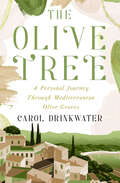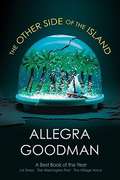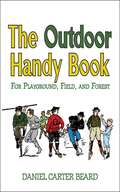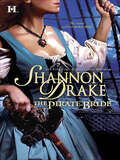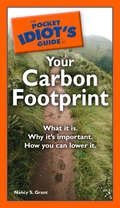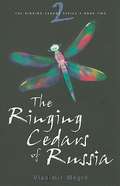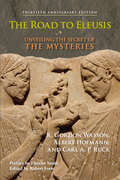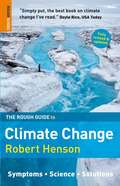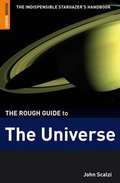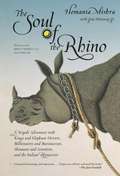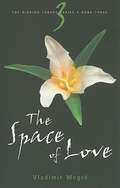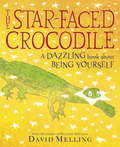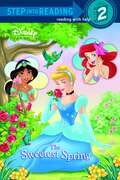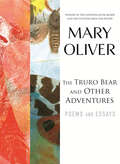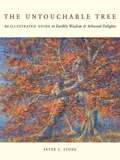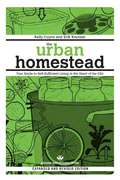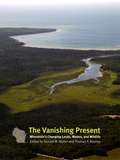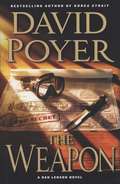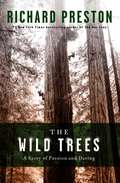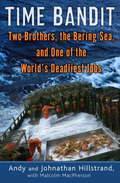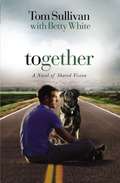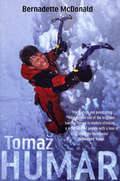- Table View
- List View
The Olive Tree: A Personal Journey Through Mediterranean Olive Groves (The Olive Farm Series)
by Carol DrinkwaterAn olive farmer journeys through Spain, Italy, and North Africa to find the future of agriculture in an age of chemicals and climate challenges. Carol Drinkwater&’s beloved olive farm in the South of France was suffering badly from destructive pests and premature ripening. In a hunt for answers, she decided to set out on her own for a fact-finding tour of Spain, Italy, Morocco, and Algeria. In The Olive Tree, Carol recounts not only the agricultural education she gained during her travels, but the dangers she faced as terrorist bombs rocked one of her destinations and a group of beekeepers helped shepherd her through dangerous territory. Through it all, she confronts issues faced by farmers and non-farmers alike in today&’s world, from climate change to diminishing water reserves to the excessive use of chemicals. Ultimately, she will return to her land in Provence with a new appreciation for the urgency of these problems—and with an ingenious vision for the future shared with her by a brilliant group of olive growers . . .Praise for the Olive Farm series &“Vibrant, intoxicating and heartwarming.&” —Sunday Express &“Spellbinding . . . a must for anyone who dreams of moving to a kinder climate and starting a new life.&” —Choice
The Other Side of the Island
by Allegra GoodmanFrom New York Times bestselling author Allegra Goodman comes a post apocalyptic novel about love, loss, and the power of human choice. Honor and her parents have been reassigned to live on Island 365 in the Tranquil Sea. Life is peaceful there—the color of the sky is regulated by Earth Mother, a corporation that controls New Weather, and it almost never rains. Everyone fits into their rightful and predictable place. . . . Except Honor. She doesn’t fit in, but then she meets Helix, a boy with a big heart and a keen sense for the world around them. Slowly, Honor and Helix begin to uncover a terrible truth about life on the Island: Sooner or later, those who are unpredictable disappear . . . and they don’t ever come back. The Other Side of the Island has been named a Best Book of 2008 by the LA Times, Washington Post, and Village Voice. .
The Other Side of the Island
by Allegra GoodmanEarth Mother is always watching... And one brave girl is about to find out why.
The Outdoor Handy Book: For Playground, Field, and Forest
by Daniel Carter BeardIngenuity and self-reliance are valuable qualities in a boy or man," writes famed outdoorsman Daniel Carter Beard. And what better way to foster them than by working-or playing-with your hands? For fathers who want to build the model ships (or real boats!) they never knew how to build, and sons who want to build the ultimate snow fort, The Outdoor Handy Book is a perfect compendium of wisdom and mischief. In its pages are directions for flying paper dragons, stilt-walking, playing dozens of ball games, building doghouses, capturing butterflies and frogs, and much more. Fully illustrated, and replete with notes to make sure that your fun is varied, continuous, and instructional in every season of the year, The Outdoor Handy Book is great all-ages activities resource, whether you're at the workbench or communing with nature.
The Pirate Bride
by Shannon DrakeA Scottish lord discovers his notorious pirate captor is actually a beautiful woman in this historical romance by a New York Times–bestselling author.Those who survive the wrath of Red Robert would never guess the pirate’s secret—Red Robert is a woman, masquerading as a man. Yet though the swift steel of her sword has spread her reputation to the farthest corners of the map, there is only one treasure she seeks—the blood of her lifelong nemesis . . . Blair Colm.Shipwrecked on a desert isle with the handsome Logan Hagarty, she soon rediscovers her femininity in the irresistible captain’s arms. But their paradise skies darken with the appearance of their common enemy. Now the two must summon all their strength and cunning to best the evil Colm, and protect the fierce love that has grown between them.Praise for The Pirate Bride“With wonderful romance, swashbuckling swordsmanship, and winning characters, Drake’s pirate adventure has it all.” —Booklist“The high seas make for great adventure and red-hot passion as a beleaguered ship captain meets his match in the notorious scoundrel Red Robert. . . . Drake constructs a well-drawn plot and provides plenty of sexual tension and romantic encounters as well as exotic scenery.” —Publishers Weekly
The Pocket Idiot's Guide to Your Carbon Footprint: What It Is. Why It’s Important. How You Can Lower It.
by Nancy S. GrantTake the first step toward a better environment. Awareness of global climate change has reached critical mass around the world, and people are looking to see how the choices they make affect the environment. This highly practical and easy-to-use reference helps readers understand how to do their part to combat global warming in simple, but effective ways. • Clear explanations of the relationship between energy use and carbon emissions, and an individual&’s carbon &“footprint.&” • The topic is gaining momentum on a worldwide basis. • Easy-to-use, with accessible information.
The Ringing Cedars of Russia (The Ringing Cedars Series #2)
by Vladimir Megré John Woodsworth Leonid SharashkinAfter rising rapidly to the top of national best-seller lists, first-time author Vladimir Megre has some explaining to do.
The Road to Eleusis: Unveiling the Secret of the Mysteries
by Carl A. Ruck Albert Hofmann R. Gordon Wasson"...one of the two best kept secrets in history, and this book is the most successful attempt I know to unlock it. ... [A] historical tour de force."--Huston Smith, author of The World&’s ReligionsThe secretive Mysteries conducted at Eleusis in Greece for nearly two millennia have long puzzled scholars with strange accounts of initiates experiencing otherworldly journeys. In this groundbreaking work, three experts—a mycologist, a chemist, and a historian—argue persuasively that the sacred potion given to participants in the course of the ritual contained a psychoactive entheogen. The authors then expand the discussion to show that natural psychedelic agents have been used in spiritual rituals across history and cultures. Although controversial when first published in 1978, the book&’s hypothesis has become more widely accepted in recent years, as knowledge of ethnobotany has deepened. The authors have played critical roles in the modern rediscovery of entheogens, and The Road to Eleusis presents an authoritative exposition of their views. The book&’s themes of the universality of experiential religion, the suppression of that knowledge by exploitative forces, and the use of psychedelics to reconcile the human and natural worlds make it a fascinating and timely read. This 30th anniversary edition includes an appreciative preface by religious scholar Huston Smith and an updated exploration of the chemical evidence by Peter Webster.
The Rough Guide to Climate Change
by Duncan Clark Robert HensonThe Rough Guide to Climate Change gives the complete picture of the single biggest issue facing the planet today. Cutting a swathe through scientific research and political debate, this completely updated 2nd edition lays out the facts and assesses the options- global and personal- for dealing with the threat of a warming world. The guide looks at the evolution of our atmosphere over the last 4.5 billion years and what computer simulations of climate change reveal about our past, present, and future. This updated edition includes new information from the 2007 report from the International Panel on Climate Change and an updated politics section to reflect post-Kyoto developments. Discover how rising temperatures and sea levels, plus changes to extreme weather patterns, are already affecting life around the world. The guide unravels how governments, scientists and engineers plan to tackle the problem and includes in-depth information and lifestyle tips about what you can do to help.
The Rough Guide to the Universe (2nd edition)
by John ScalziWhether you're a novice or a more experienced astronomer, The Rough Guide to The Universe is indispensable. The truth may or may not be out there, but space is the place to look, and the Rough Guide to the Universe takes it all in, from our own moon to the furthest frontiers of the known universe - and then speculates about what lies beyond. This fascinating guide is not meant to delve too deeply; instead it gives the reader the grounding needed to appreciate the night sky. Clue-up on the basics with concise information on every planet in the solar system, and practical advice on observing the planets and stars with binoculars, telescopes and the naked eye. You'll find the latest theories about how the universe came to exist, incisive explanations of the formation of galaxies and weird concepts such a dark matter, wormholes and superstrings. The guide also provides travel-based information on planetariums, observatories and 'deep sky' sites as well as listings of star clubs, space news sources and other Internet resources. With dozens of photographs and star charts of every constellation, The Rough Guide to the Universe is the stargazer's essential handbook.
The Soul of a Rhino: A Nepali Adventure with Kings and Elephant Drivers, Billionaires and Bureaucrats, Shamans and Scientists and the Indian Rhinoceros
by Hemanta Mishra Jim OttawayThis is a story of a Nepalese who has spent his entire life devoted to the conservation of an endangered species.
The Space of Love (The Ringing Cedars Series #3)
by Vladimir Megré John Woodsworth Leonid SharashkinNothing you have read in Books 1 and 2 has prepared you for Book 3--The Space of Love.
The Star-faced Crocodile: A dazzling book about being yourself
by David MellingStarring two fabulously fun characters - a bear with a banjo and a star-faced crocodile - this is a tale of friendship and music. Told with warmth and wit and accompanied by vibrant watercolour artwork, it teaches us how to respect the world we live in and the delicate balance of nature.A starry celebration of friendship from the creator of the bestselling Hugless Douglas series, which has sold over 1.4 million copies in 26 languages.'A warm tale of friendship.' Junior
The Sweetest Spring (Step into Reading)
by Apple JordanShare the sweetness of spring with Cinderella, Ariel, and all the Disney Princesses in this fun and bouncy Step 2 reader. This delightful story with bright and beautiful illustrations will have budding young princess fans blossoming into wonderful readers.
The Transformation of Agri-Food Systems: Globalization, Supply Chains and Smallholder Farmers
by Ellen B. McCullough Prabhu L. Pingali Kostas G. Stamoulis'There should be a good market for this book. The topic is very timely and a major theme of the new World Development Report 2008. The editors and contributors are world class.' Derek Byerlee, World Bank 'This is a topic of wide interest and high policy importance. The depth of coverage and excellent synthesis should ensure that the book will have a substantial market in high-level undergraduate and graduate courses in agricultural development. It will have a solid readership among development economists and policy makers as well.' Mark Rosegrant, International Food Policy Research Institute The driving forces of income growth, demographic shifts, globalization and technical change have led to a reorganization of food systems from farm to plate. The characteristics of supply chains - particularly the role of supermarkets - linking farmers have changed, from consumption and retail to wholesale, processing, procurement and production. This has had a dramatic effect on smallholder farmers, particularly in developing countries. This book presents a comprehensive framework for assessing the impacts of changing agri-food systems on smallholder farmers, recognizing the importance of heterogeneity between developing countries as well as within them. The book includes a number of case studies from Asia, Africa, Latin America and Eastern Europe, which are used to illustrate differences in food systems' characteristics and trends. The country case studies explore impacts on the small farm sector across different countries, local contexts and farm types. Published with FAO
The Truro Bear and Other Adventures: Poems and Essays
by Mary OliverThe Truro Bear and Other Adventures, a companion volume to Owls and Other Fantasies and Blue Iris, brings together ten new poems, thirty-five of Oliver's classic poems, and two essays all about mammals, insects, and reptiles. The award-winning poet considers beasts of all kinds: bears, snakes, spiders, porcupines, humpback whales, hermit crabs, and, of course, her beloved but disobedient little dog, Percy.
The Untouchable Tree: An Illustrated Guide to Earthly Wisdom & Arboreal Delights
by Peter C. StoneAn artist shares his love of trees with his brilliant paintings and thoughtful words. According to Peter Stone, "any book about trees can't help but be a book about people," and so his book is about our connection to the magnificence, the transcendence, and the essential nature of trees. Throughout human history, they have served as shelter and as symbol. And today, more than ever, our destiny is tied to theirs. The Untouchable Tree is a unique exploration of our relationship with these amazing plants. It covers everything from our exploitation of trees for material gain to our unique love of woodlands, parks, and forests. Peter C. Stone is an artist in the best sense of the word. His paintings and his words remind us of why we love trees and forests-and why they are important. 30 color illustrations.
The Urban Homestead (Expanded & Revised Edition)
by Kelly Coyne Erik KnutzenThe expanded, updated version of the best-selling classic, with a dozen new projects."A delightfully readable and very useful guide to front- and back-yard vegetable gardening, food foraging, food preserving, chicken keeping, and other useful skills for anyone interested in taking a more active role in growing and preparing the food they eat."-BoingBoing.net"...the contemporary bible on the subject."-The New York TimesThis celebrated, essential handbook shows how to grow and preserve your own food, clean your house without toxins, raise chickens, gain energy independence, and more. Step-by-step projects, tips, and anecdotes will help get you started homesteading immediately. The Urban Homestead is also a guidebook to the larger movement and will point you to the best books and Internet resources on self-sufficiency topics.Written by city dwellers for city dwellers, this copiously illustrated, two-color instruction book proposes a paradigm shift that will improve our lives, our community, and our planet. By growing our own food and harnessing natural energy, we are planting seeds for the future of our cities.Learn how to:Grow food on a patio or balconyPreserve or ferment food and make yogurt and cheeseCompost with wormsKeep city chickensDivert your grey water to your gardenClean your house without toxinsGuerilla garden in public spacesCreate the modern homestead of your dreams
The Vanishing Present: Wisconsin’s Changing Lands, Waters, and Wildlife
by Donald M. Waller Thomas P. RooneyStraddling temperate forests and grassland biomes and stretching along the coastline of two Great Lakes, Wisconsin contains tallgrass prairie and oak savanna, broadleaf and coniferous forests, wetlands, natural lakes, and rivers. But, like the rest of the world, the Badger State has been transformed by urbanization and sprawl, population growth, and land-use change. For decades, industry and environment have attempted to coexist in Wisconsin-- and the dynamic tensions between economic progress and environmental protection makes the state a fascinating microcosm for studying global environmental change. The Vanishing Present brings together a distinguished set of contributors-- including scientists, naturalists, and policy experts-- to examine how human pressures on Wisconsin's changing lands, waters, and wildlife have redefined the state's ecology. Though they focus on just one state, the authors draw conclusions about changes in temperate habitats that can be applied elsewhere, and offer useful insights into future of the ecology, conservation, and sustainability of Wisconsin and beyond. A fitting tribute to the home state of Aldo Leopold and John Muir, The Vanishing Present is an accessible and timely case study of a significant ecosystem and its response to environmental change.
The Weapon (A Dan Lenson Novel #11)
by David PoyerA deadly new weapon hits the international arms market--- and the only way to preserve the balance of power in the Mideast is to hijack the Iranian sub that carries it. United States Navy Commander and Medal of Honor winner Dan Lenson has been handed another outside-the-box assignment. TAG Charlie, an elite team of active-duty sailors, SEALs, and civilian analysts, is tasked to investigate and defuse emerging naval threats around the globe. When the Skhval-K-- an unstoppable rocket torpedo designed to destroy U.S. aircraft carriers-- is demonstrated at a Moscow arms show, Dan tries to buy one so that the U.S. Navy can build countermeasures. But he's lucky to escape with his life when he's set up by Russia's new counterespionage service. When the Russians sell the new weapon to Iran and China instead, Dan decides that if he can't buy it, he'll steal it. But when a daring nighttime penetration of Iran's largest naval base goes wrong too, Dan finds himself captaining a submarine he barely knows how to submerge, pursued by Iranian destroyers and sub-hunting aircraft through the shallow, hazardous Persian Gulf.Authentic action and daring espionage combine in a timely thriller set in a hair-trigger military environment.
The Wild Trees: A Story of Passion and Daring
by Richard PrestonHidden away in foggy, uncharted rain forest valleys in Northern California are the largest and tallest organisms the world has ever sustained-the coast redwood trees, Sequoia sempervirens. Ninety-six percent of the ancient redwood forests have been destroyed by logging, but the untouched fragments that remain are among the great wonders of nature. The biggest redwoods have trunks up to thirty feet wide and can rise more than thirty-five stories above the ground, forming cathedral-like structures in the air. Until recently, redwoods were thought to be virtually impossible to ascend, and the canopy at the tops of these majestic trees was undiscovered. In The Wild Trees, Richard Preston unfolds the spellbinding story of Steve Sillett, Marie Antoine, and the tiny group of daring botanists and amateur naturalists that found a lost world above California, a world that is dangerous, hauntingly beautiful, and unexplored. The canopy voyagers are young-just college students when they start their quest-and they share a passion for these trees, persevering in spite of sometimes crushing personal obstacles and failings. They take big risks, they ignore common wisdom (such as the notion that there's nothing left to discover in North America), and they even make love in hammocks stretched between branches three hundred feet in the air.The deep redwood canopy is a vertical Eden filled with mosses, lichens, spotted salamanders, hanging gardens of ferns, and thickets of huckleberry bushes, all growing out of massive trunk systems that have fused and formed flying buttresses, sometimes carved into blackened chambers, hollowed out by fire, called "fire caves." Thick layers of soil sitting on limbs harbor animal and plant life that is unknown to science. Humans move through the deep canopy suspended on ropes, far out of sight of the ground, knowing that the price of a small mistake can be a plunge to one's death.Preston's account of this amazing world, by turns terrifying, moving, and fascinating, is an adventure story told in novelistic detail by a master of nonfiction narrative. The author shares his protagonists' passion for tall trees, and he mastered the techniques of tall-tree climbing to tell the story in The Wild Trees-the story of the fate of the world's most splendid forests and of the imperiled biosphere itself.From the Hardcover edition.
The Wild Trees: A Story of Passion and Daring
by Richard PrestonHidden away in foggy, uncharted rain forest valleys in Northern California are the largest and tallest organisms the world has ever sustained-the coast redwood trees, Sequoia sempervirens. Ninety-six percent of the ancient redwood forests have been destroyed by logging, but the untouched fragments that remain are among the great wonders of nature. The biggest redwoods have trunks up to thirty feet wide and can rise more than thirty-five stories above the ground, forming cathedral-like structures in the air. Until recently, redwoods were thought to be virtually impossible to ascend, and the canopy at the tops of these majestic trees was undiscovered. In The Wild Trees, Richard Preston unfolds the spellbinding story of Steve Sillett, Marie Antoine, and the tiny group of daring botanists and amateur naturalists that found a lost world above California, a world that is dangerous, hauntingly beautiful, and unexplored. The canopy voyagers are young-just college students when they start their quest-and they share a passion for these trees, persevering in spite of sometimes crushing personal obstacles and failings. They take big risks, they ignore common wisdom (such as the notion that there's nothing left to discover in North America), and they even make love in hammocks stretched between branches three hundred feet in the air.The deep redwood canopy is a vertical Eden filled with mosses, lichens, spotted salamanders, hanging gardens of ferns, and thickets of huckleberry bushes, all growing out of massive trunk systems that have fused and formed flying buttresses, sometimes carved into blackened chambers, hollowed out by fire, called "fire caves." Thick layers of soil sitting on limbs harbor animal and plant life that is unknown to science. Humans move through the deep canopy suspended on ropes, far out of sight of the ground, knowing that the price of a small mistake can be a plunge to one's death.Preston's account of this amazing world, by turns terrifying, moving, and fascinating, is an adventure story told in novelistic detail by a master of nonfiction narrative. The author shares his protagonists' passion for tall trees, and he mastered the techniques of tall-tree climbing to tell the story in The Wild Trees-the story of the fate of the world's most splendid forests and of the imperiled biosphere itself.From the Hardcover edition.
Time Bandit: Two Brothers, the Bering Sea, and One of the World's Deadliest Jobs (Playaway Adult Nonfiction Ser.)
by Malcolm Macpherson Johnathan Hillstrand Andy HillstrandThe story of two brothers, Johnathan and Andy Hillstrand, who are maverick fisherman on the Bering Sea. They share the skippering duties on board their family-operated vessel, the Time Bandit. They are totally outrageous characters, taking on what is known to be the most dangerous job in the world. The Bering Sea is dangerous and mercurial and can steal years from a fisherman's life and Time Bandit is the name of the fishing vessel the brothers use to hook the Alaskan King Crabs. In pursuit of their daily catch, the brothers brave ice floes and heaving waves 60ft high, the perils of 1000lb steel crab traps thrown about by the wind and the constant menace of open water. The details of their childhood make you wonder how they ever lived past the age of ten! This amazing story, co-written with Malcolm MacPherson, brings to life the heart-in-your-throat existence of the Hillstrand brothers.
Together: A Story of Shared Vision
by Tom Sullivan Betty WhiteFrom the book "If this dog loves me enough to lay down his life for my survival, how can I just give up?" One misstep on a mountain climbing trip plunged Brenden McCarthy into darkness by stealing his sight and everything else he held dear. But a too-independent guide dog named Nelson just might lead him back to life . . . if they don't kick him out of guide dog school first. Brenden can't accept the fact that he's lost his sight. And Nelson can't accept that he's been paired with someone other than his former master. Just as Brenden starts to live again, a devastating setback causes him to try to end it all. Brenden releases Nelson and sits down in the middle of an intersection. At that moment, everything changes when Nelson freely decides he'd rather join Brenden in death than live without him. Now they need a leap of faith and a love beyond words to make it.
Tomaz Humar
by Bernadette McDonaldIn August, 2005, Tomaž Humar was trapped on a narrow ledge at 5900 metres on the formidable Rupal Face of Nanga Parbat. He had been attempting a new route, directly up the middle of the highest mountain face in the world - solo. After six days he was out of food, almost out of fuel and frequently buried by avalanches. Three helicopters were poised for a brief break in the weather to pluck him off the mountain. Because of the audacity of the climb, the fame of the climber, the high risk associated with the rescue, and the hourly reports posted on his base-camp website, the world was watching. Would this be the most spectacular rescue in climbing history? Or a tragic - and very public - death in the mountains?Years before, as communism was collapsing and the Balkans slid into chaos, Humar was unceremoniously conscripted into a dirty war that he despised, where he observed brutal and inhumane atrocities that disgusted him. Finally he did the unthinkable: he left and finally arrived home in what had become a new country - Slovenia. He returned to climbing, and within very few years, he was among the best in the world. Reinhold Messner, among others, called him the most remarkable mountain climber of his generation. His routes are seldom repeated; most consider them to be suicidal; yet he often climbs them solo. As this book was being written, he achieved the first-ever solo ascent of the east summit of Annapurna.Tomaž Humar has cooperated with Bernadette McDonald, the distinguished former director of the Banff Festival and author of several books on mountaineering, to tell his utterly remarkable story.
